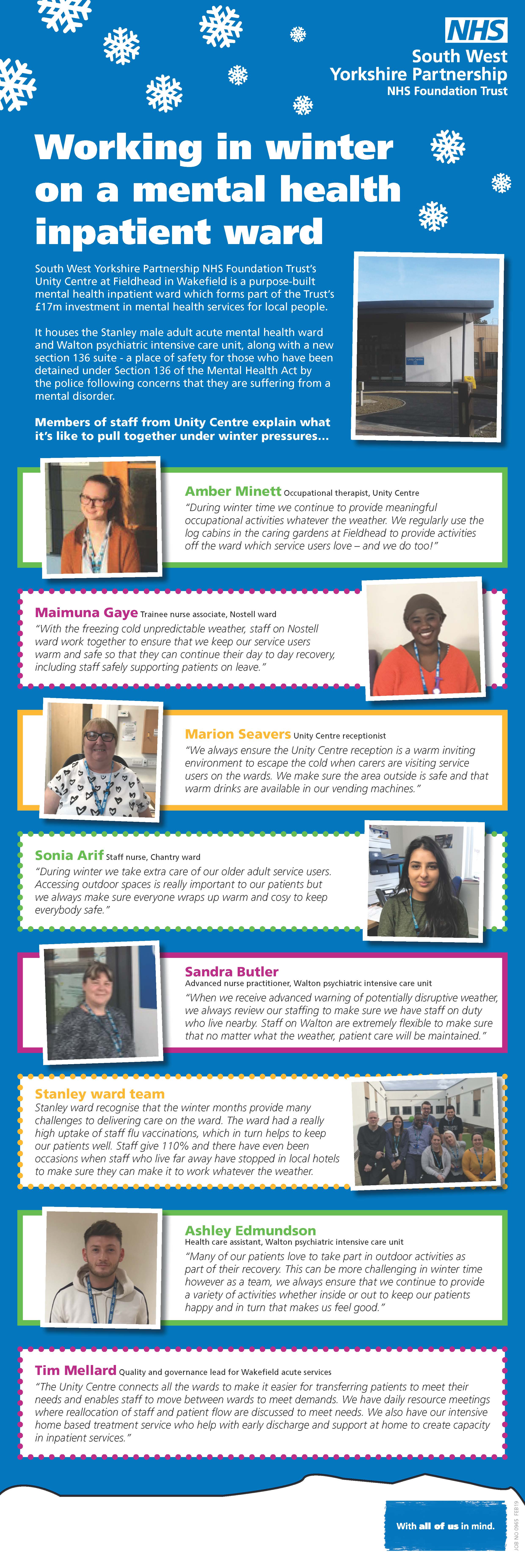


The penultimate week of the winter sitreps saw fair weather across much of the country, and most indicators improved on the previous week. Demand remains high, but the innovation and hard work of trusts and their staff throughout the winter, along with the milder conditions have meant performances have held up and in many cases been better than last year.
Key indicators in week 12 include:
- bed occupancy is down 0.6% this week and is now 93.9%, which is 1.3% lower than the same point last year
- there were an average of 3,603 escalation beds open each day this week, 6.7% fewer than last week and 23% fewer than the same point last year
- total beds open dropped by 0.4% since last week and is 0.9% lower than the same point last year
- similar numbers of patients as last week stayed in hospital longer than 7, 14 and 21 days, but compared to the same point last year 6.3% fewer stayed longer than 7 days, and 12.1% fewer stayed longer than 21 days
- beds closed with diarrhoea and vomiting and norovirus decreased by 11% to 557 this week - in comparison to the same time last year, the number of closed beds is 41% lower.
- there were 17 A&E diverts this week, the same as last week
- the number of ambulance arrivals decreased by 3% this week to 95,289 (2,948 fewer than last week), the number of arrivals remains 2% higher than the same point last year
- the proportion of ambulance arrivals waiting more than 30 minutes this week decreased by 1.1% to 11.3%, and the proportion waiting more than 60 minutes decreased by 0.3% to 2.2% - these are both considerably lower than the proportion experiencing handover delays at the same point last year, where 13.2% of arrivals were delayed by 30 minutes or more, and 3.1% were delayed by 60 minutes or more.
Demand remains high, but the innovation and hard work of trusts and their staff throughout the winter, along with the milder conditions have meant performances have held up and in many cases been better than last year.
tweet this
A relatively small reduction in bed occupancy means trusts have created a little more breathing space, but the rate remains uncomfortably high and hospitals will still feel extremely busy. Escalation beds are at their lowest level in 7 weeks, and patient flow remains positive with the numbers staying longer than 7 and 21 days considerably better than last year.
A significant factor in the extreme pressure experienced last winter was the high number of beds closed due to diarrhoea and vomiting and norovirus, but this has been less of an issue this winter. In week 12 we saw an average of 557 beds closed each day, 41% lower than the same point last year. Flu has also been less of a factor this winter, with a combination of milder weather, less severe strain, and more effective precautions has led to a reduction in the number of patients requiring inpatient care.
Every week this winter ambulance arrivals have been higher than the corresponding week last year, and this week was no exception with 1,833 more arrivals than the same point last year. However, the ambulance service and acute trusts have risen well to this challenge all winter, and this week 0.9% fewer arrivals were delayed by both 30 minutes and 60 minutes compared to last year.
Every week this winter ambulance arrivals have been higher than the corresponding week last year, and this week was no exception with 1,833 more arrivals than the same point last year.
With one week to go in the winter reporting period, trusts will be willing the pressure to ease. Although our winter watch series will be coming to an end next week, we will continue to monitor how demand patterns affect trusts throughout the year given that trusts increasingly experience peak demand beyond the traditional winter season. Staff continue to work incredibly hard to maintain performance, and it will be important to recognise the positive steps taken to achieve this and share best practice across the system to meet future challenges.
For a more detailed breakdown of this week’s winter sitrep data please see our summary dashboard.
Winter pressures on a mental health inpatient ward
This week, South West Yorkshire Partnership NHS Foundation Trust provide frontline perspective on how winter feels 'on the ground'. Their infographic below details how the pressures affect their mental health inpatient ward.

Implementation of NHS long term plan must help trusts move away from ‘endless’ winter pressure
Responding to the latest weekly winter performance figures from NHS England, NHS Providers director of policy and strategy, Miriam Deakin said:
"Although we have seen a spell of warmer weather, trusts and their staff are still working incredibly hard to meet extra winter demand for services.
"The number of patients arriving at hospital by ambulance has remained consistently high this winter. Despite greater numbers of patients needing care, trusts and ambulance services have worked hard to reduce the time patients wait for care compared to last winter.
"This is thanks to the preparations trusts made for winter, and the ongoing efforts of their staff to free up beds and help patients return home from hospital when they are better, more quickly.
"It is good to see that the number of beds in use across the service has fallen this week. However, bed occupancy remains uncomfortably high. If we are to move away from this sense of endless 'winter' pressure, we need to ensure the implementation of the NHS long term plan provides the capacity for local health and care systems to support patients both in the community and in hospital settings."